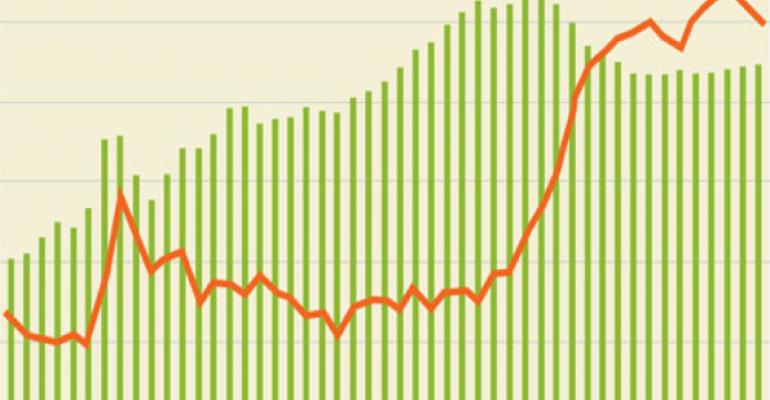The title of the report says it all: "US CMBS: Growing Gap between Strong and Weak Malls." As the economy continues to creep down the long, winding road to recovery, strong malls are luring retail tenants away from weaker malls, according to this new report from Moody’s Investors Service.
Strong malls have benefitted from a flight to quality properties among retailers, according to Moody’s. In contrast, weak malls struggle with the sluggish economic recovery and competition from online merchants and other brick and mortar retail formats such as outlets, power centers and lifestyle centers.
Most malls are doing well—or at least not terribly, according to Moody’s. "The vast majority of the CMBS loans collateralized by regional malls that we have reviewed have been high quality,” says report co-author Robb Paltz vice president and senior credit officer for Moody’s.
Also, retail properties overall are seeing the first glimmers of a recovery. Vacancies fell 10 basic points to 10.9 percent in the first quarter—that’s the first decline since 2005, according to data firm Reis. Within the healing retail sector, malls are relatively strong, with national vacancies declining by 20 basis points to 9.0 percent in the first quarter. That’s the second consecutive quarter of vacancy declines, according to Reis.
However, weaker malls continue to struggle as their retail tenants focus on efficient space usage and close stores at underperforming or less profitable locations. That’s a worry for the underwriters at Moody’s because losses from failed malls tend to be larger than the losses from any other type of commercial property. “Should the location lose its viability for retail altogether, value would revert to land less demolition cost,” says Paltz.

For example, Greeley Mall in Colorado was liquidated in May 2012 with a 96 percent loss severity, according to Moody’s. At one time the mall was anchored by Dillard’s and had an inline occupancy above 90 percent. But Dillard’s and a number of inline tenants closed their stores and relocated to another property in the same trade area. The sponsor had difficulty re-leasing the space and a downward occupancy and rent spiral began.
So, what’s the difference between the winning malls and the losers? Attributes include being the dominant or only mall within a trade area, having four or more department stores as anchors, retail occupancies over 85 percent and tenant sales averaging greater than $450 per sq. ft.
One particularly telling sign of success: Apple Stores. Simply having an Apple Store doing business at your mall may raise a mall’s average sales per sq. ft. by more than $100, according to Moody’s. “The Apple stores in our data base typically have sales equaling or exceeding those of the anchor department stores despite Apple operating from a fraction of the space.”
Here is Moody’s checklist of high-risk characteristics for malls: - Not dominant within trade area (third or fourth best mall in a four mall market); - Three or fewer department stores as anchors, several of which have sales below their chain-wide averages; - Inline occupancy below 85 percent; - High level of short-term tenants or those whose rents are determined solely as a percentage of sales; - Inline tenant sales averaging $300 per sq. ft. or less; - Occupancy cost to sales ratio that is not sustainable from a tenant’s perspective; - Occupancy near a level that threatens to trip co-tenancy clauses; - Locations exhibiting weak trade area demographics, most importantly population and average household income; - Alternative non-retail uses occupying portions of the property (such as a school or office use); - Weak sponsorship with limited bargaining power with national retailers.

